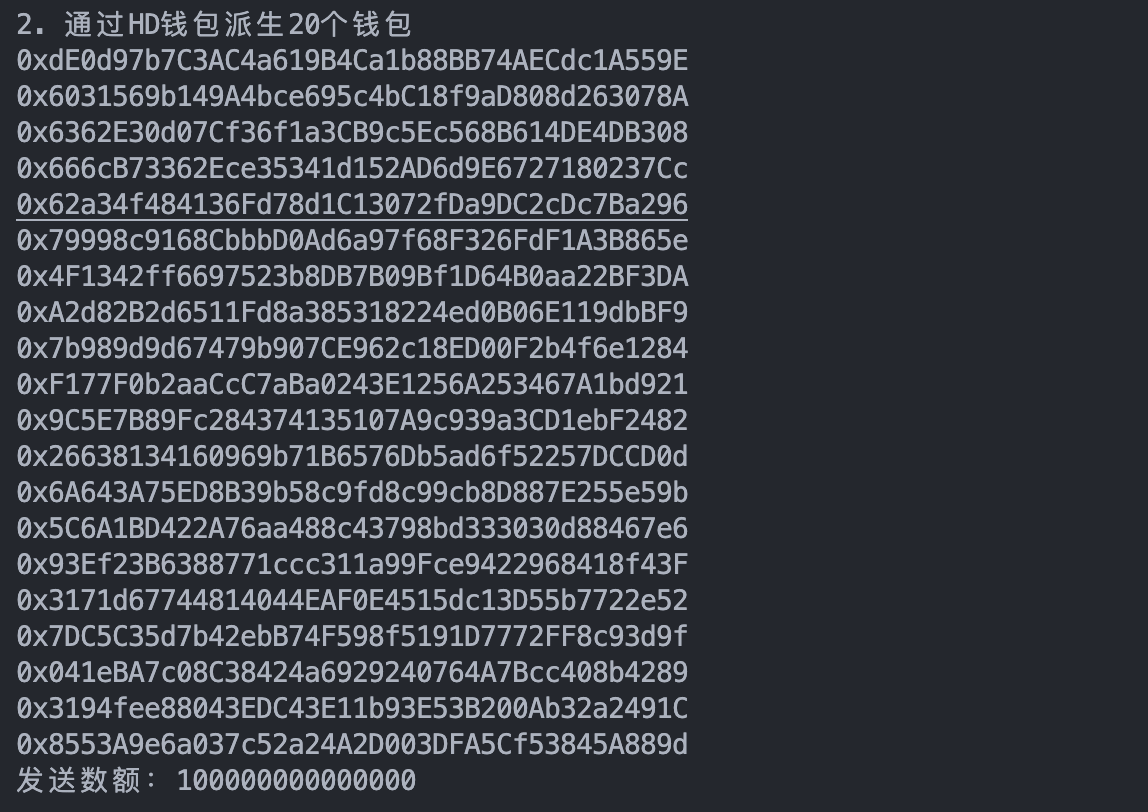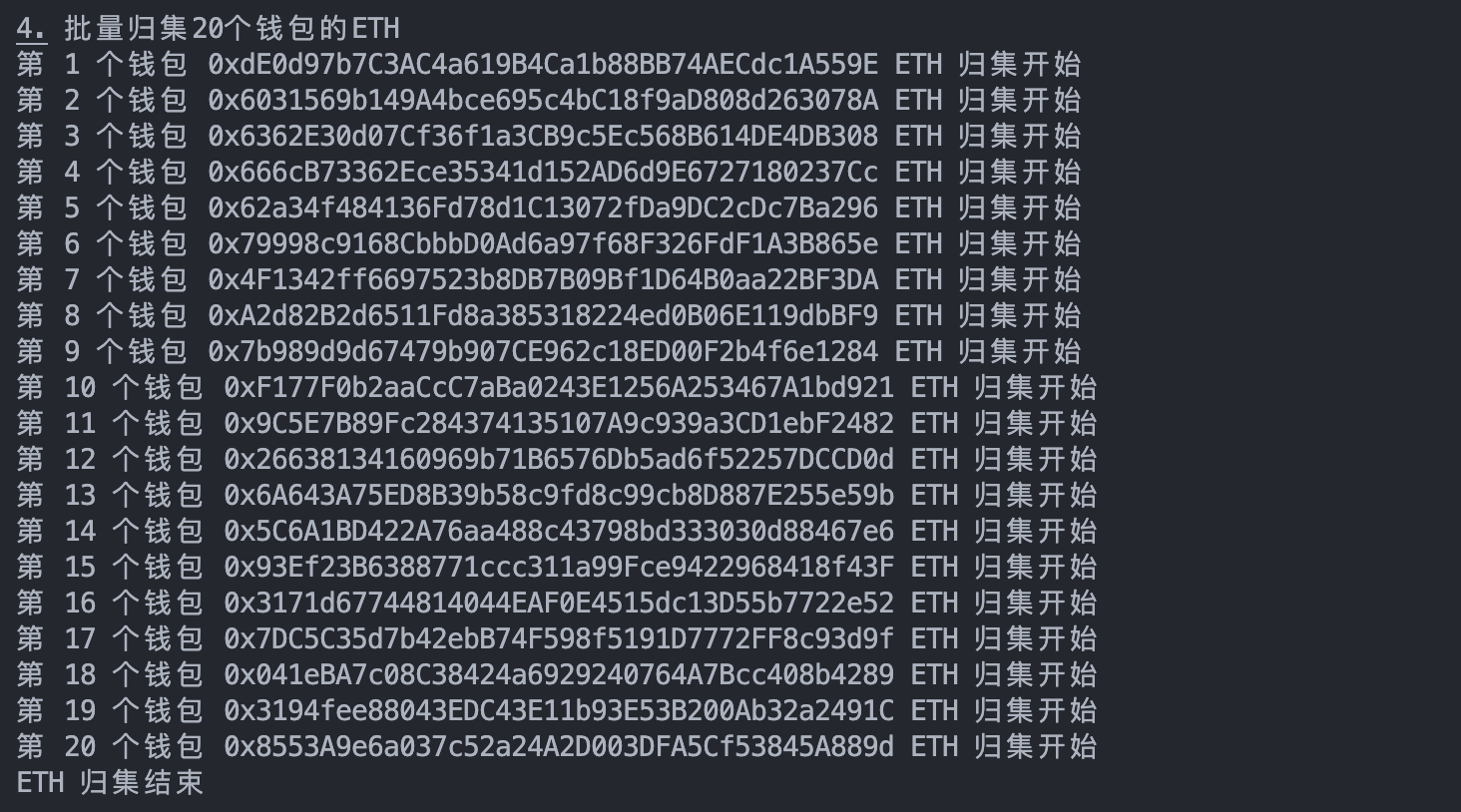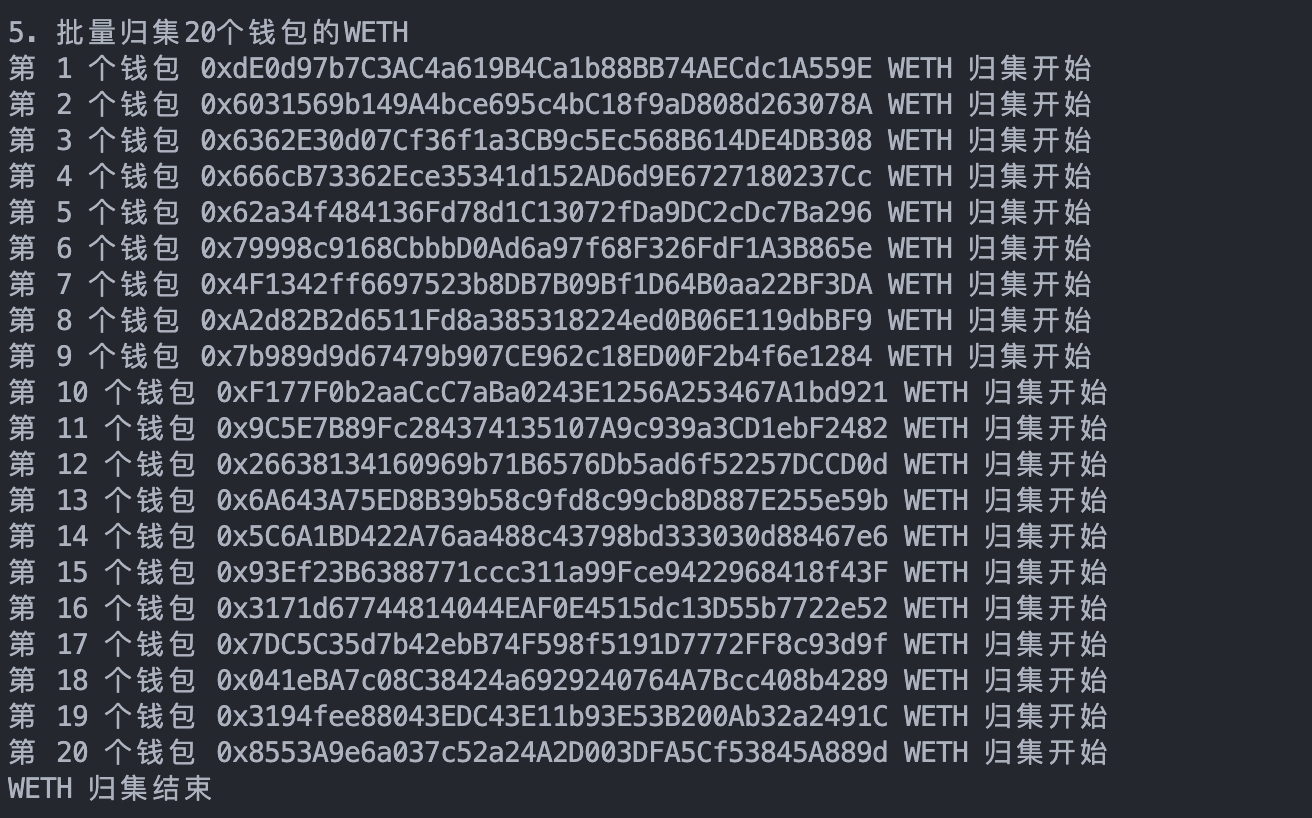WTF Ethers: 16. Batch Collect
I've been revisiting ethers.js recently to refresh my understanding of the details and to write a simple tutorial called "WTF Ethers" for beginners.
Twitter: @0xAA_Science
Community: Website wtf.academy | WTF Solidity | discord | WeChat Group Application
All the code and tutorials are open-sourced on GitHub: github.com/WTFAcademy/WTF-Ethers
In this session, we will introduce how to use ethers.js to collect the assets of multiple wallets (ETH and tokens) into one wallet.
Batch Collect
After interacting and playing around with the chain, we need to consolidate and manage the assets of multiple wallets. You can use HD Wallet or other methods to operate multiple wallets with different private keys, and then use the ethers.js script to complete the collection. Below, we will demonstrate the collection of ETH (native token) and WETH (ERC20 token) separately.
Create a
providerand awallet, wherewalletis the receiving wallet for the assets.// Prepare Alchemy API, you can refer to https://github.com/AmazingAng/WTF-Solidity/blob/main/Topics/Tools/TOOL04_Alchemy/readme.md
const ALCHEMY_GOERLI_URL = 'https://eth-goerli.alchemyapi.io/v2/GlaeWuylnNM3uuOo-SAwJxuwTdqHaY5l';
const provider = new ethers.JsonRpcProvider(ALCHEMY_GOERLI_URL);
// Create wallet object using private key and provider
const privateKey = '0x21ac72b6ce19661adf31ef0d2bf8c3fcad003deee3dc1a1a64f5fa3d6b049c06'
const wallet = new ethers.Wallet(privateKey, provider)Declare the WETH contract.
// WETH ABI
const abiWETH = [
"function balanceOf(address) public view returns(uint)",
"function transfer(address, uint) public returns (bool)",
];
// WETH contract address (Goerli testnet)
const addressWETH = '0xB4FBF271143F4FBf7B91A5ded31805e42b2208d6' // WETH Contract
// Declare the WETH contract
const contractWETH = new ethers.Contract(addressWETH, abiWETH, wallet)Create an
HDwallet to manage multiple wallets.console.log("\n1. Create HD wallet")
// Generate HD wallet from mnemonic
const mnemonic = `air organ twist rule prison symptom jazz cheap rather dizzy verb glare jeans orbit weapon universe require tired sing casino business anxiety seminar hunt`
const hdNode = ethers.HDNodeWallet.fromPhrase(mnemonic)
console.log(hdNode);
Derive
20wallets from theHDwallet, and these wallets should have assets.const numWallet = 20
// Derivation path: m / purpose' / coin_type' / account' / change / address_index
// We only need to switch the last address_index to derive a new wallet from hdNode
let basePath = "m/44'/60'/0'/0";
let wallets = [];
for (let i = 0; i < numWallet; i++) {
let hdNodeNew = hdNode.derivePath(basePath + "/" + i);
let walletNew = new ethers.Wallet(hdNodeNew.privateKey);
wallets.push(walletNew);
console.log(walletNew.address)
}
// Define the amount to send
const amount = ethers.parseEther("0.0001")
console.log(`Amount to send: ${amount}`)
Read the ETH and WETH balance of an address.
console.log("\n3. Read the ETH and WETH balance of an address")
// Read the WETH balance
const balanceWETH = await contractWETH.balanceOf(wallets[19])
console.log(`WETH balance: ${ethersfromPhrase.formatEther(balanceWETH)}`)
// Read the ETH balance
const balanceETH = await provider.getBalance(wallets[19])
console.log(`ETH balance: ${ethersfromPhrase.formatEther(balanceETH)}\n`)
Use the
sendTransaction()method of the wallet class to send transactions and collectETHfrom each wallet.// 6. Batch collect ETH from wallets
console.log("\n4. Batch collect ETH from 20 wallets")
const txSendETH = {
to: wallet.address,
value: amount
}
for (let i = 0; i < numWallet; i++) {
// Connect the wallet to the provider
let walletiWithProvider = wallets[i].connect(provider)
var tx = await walletiWithProvider.sendTransaction(txSendETH)
console.log(`Collecting ETH from wallet ${i+1} ${walletiWithProvider.address}`)
}
await tx.wait()
console.log(`ETH collection completed`)
Connect the
WETHcontract to the new wallet and call thetransfer()method to collectWETHfrom each wallet.for (let i = 0; i < numWallet; i++) {
// Connect the wallet to the provider
let walletiWithProvider = wallets[i].connect(provider)
// Connect the contract to the new wallet
let contractConnected = contractWETH.connect(walletiWithProvider)
var tx = await contractConnected.transfer(wallet.address, amount)
console.log(`The ${i+1}th wallet ${wallets[i].address} WETH collection starts`)
}
await tx.wait()
console.log(`WETH collection ends`)

- Read the post-collection ETH and WETH balance of an address, and you can see the decrease in
ETHandWETHbalances, collection succeeded!console.log("\n6. Read the post-collection ETH and WETH balance of an address")
// Read WETH balance
const balanceWETHAfter = await contractWETH.balanceOf(wallets[19])
console.log(`WETH holdings after collection: ${ethersfromPhrase.formatEther(balanceWETHAfter)}`)
// Read ETH balance
const balanceETHAfter = await provider.getBalance(wallets[19])
console.log(`ETH holdings after collection: ${ethersfromPhrase.formatEther(balanceETHAfter)}\n`)

Summary
In this lecture, we introduced batch collect and used ethers.js scripts to collect ETH and WETH from 20 wallets into one wallet.